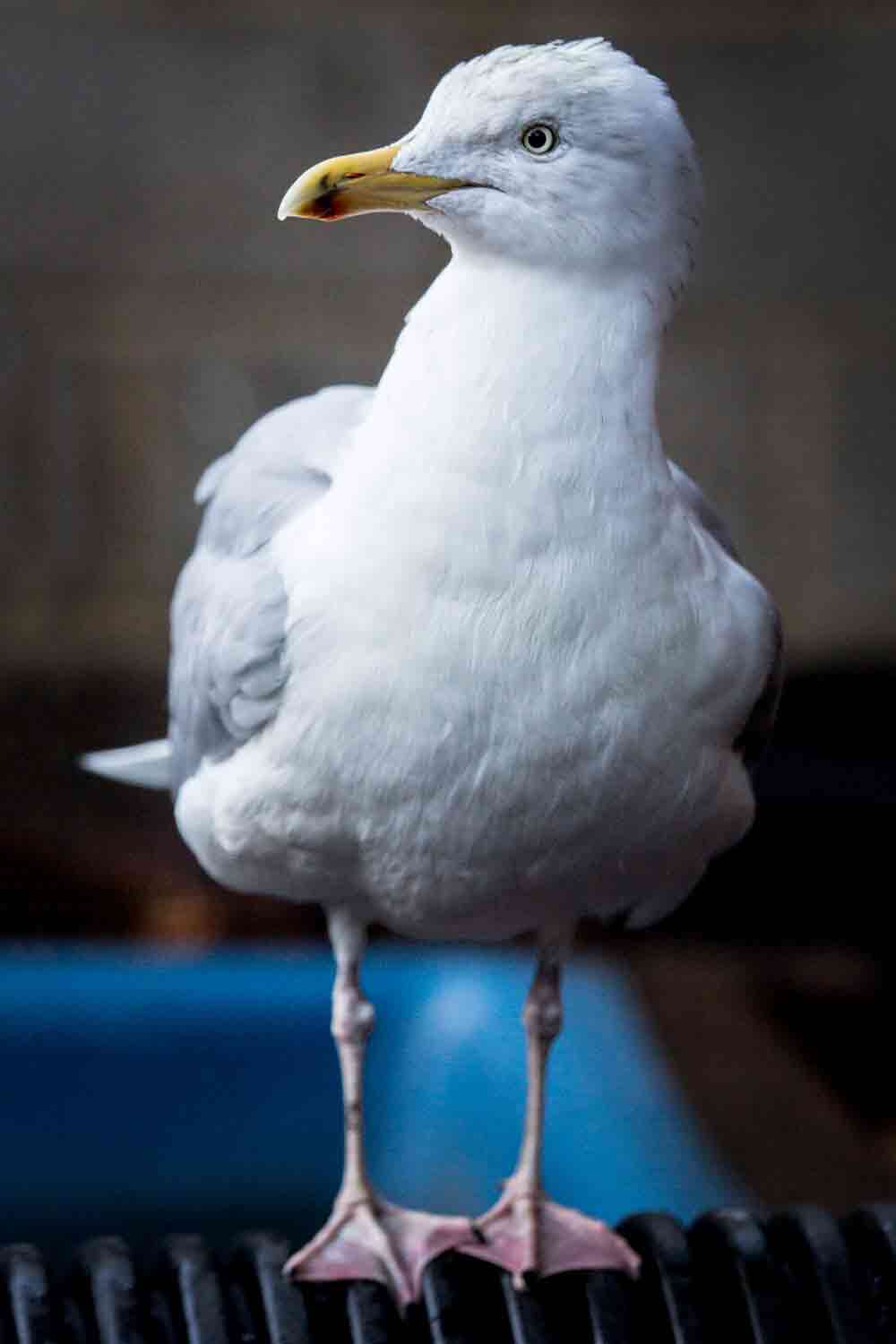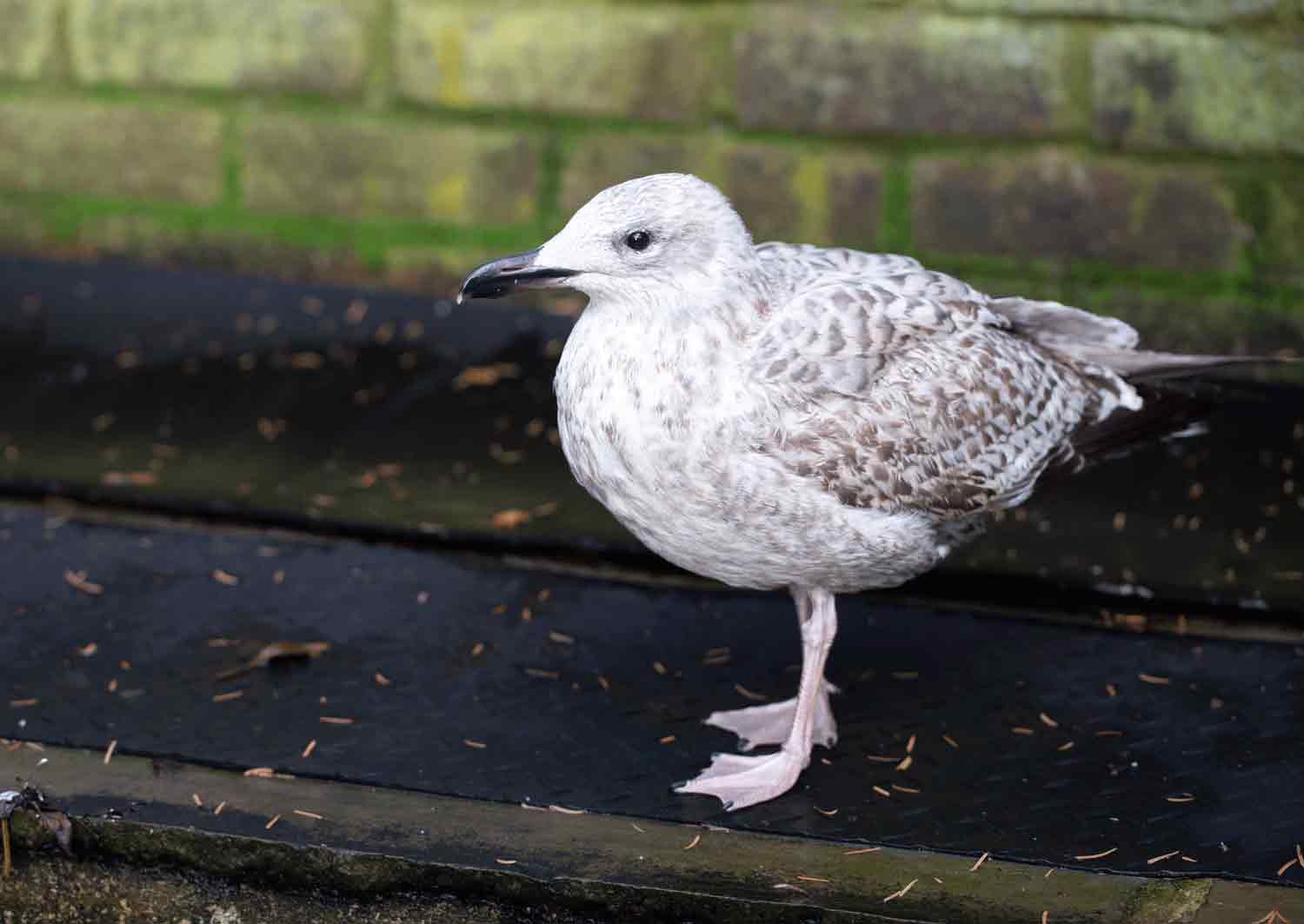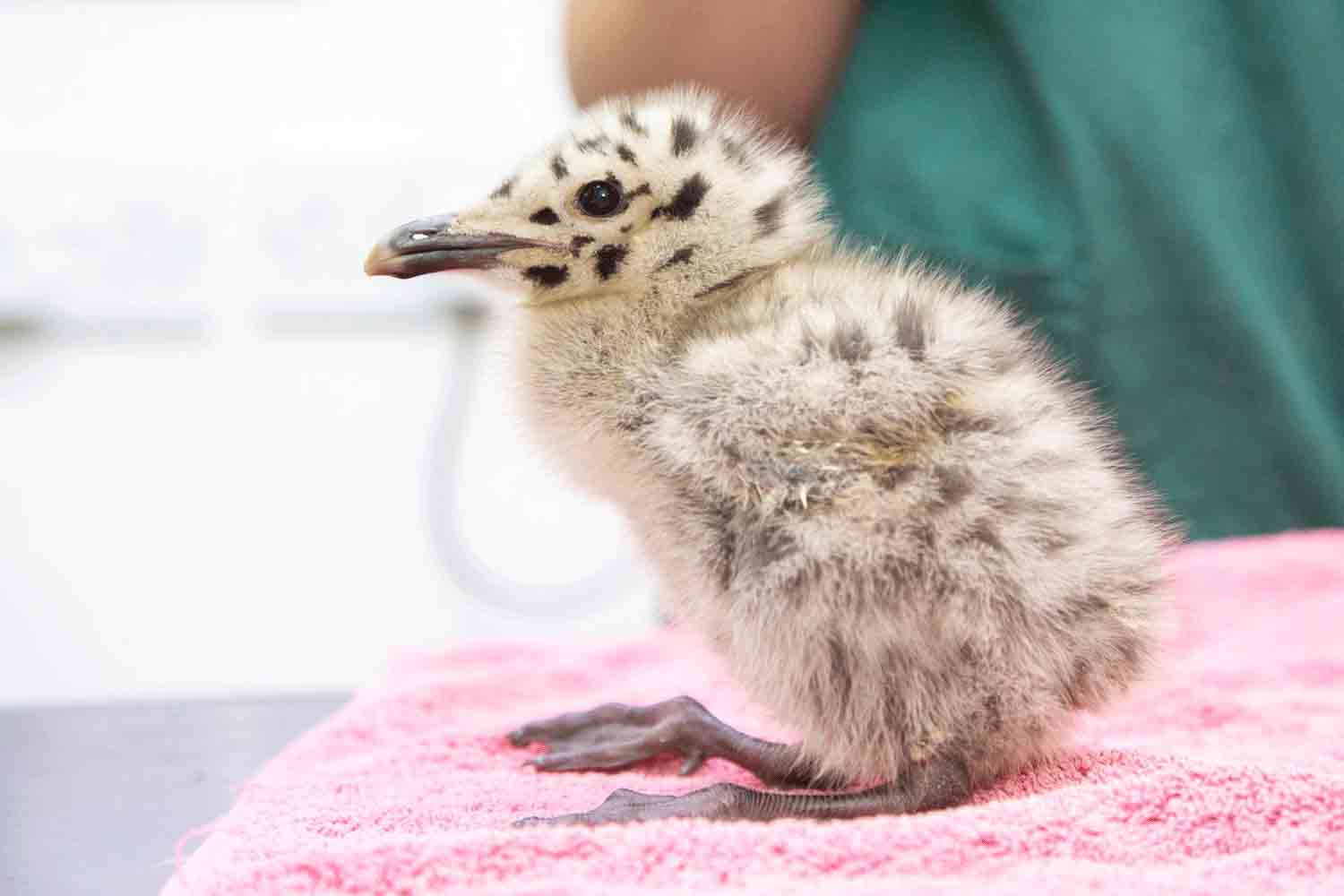Herring Gull
Life History
Length: 55-67cm
Wingspan: 130-150cm
Weight: 690-1440g
Diet: Omnivorous – carrion, offal, seeds, fruits, young birds, eggs, small mammals, insects and fish
Average Lifespan: 12 years, but oldest recorded at 29years
When to see them: All year round
UK population: est. 130,000 breeding pairs
UK conservation status: Red

About
The herring gull, more commonly referred to as a seagull, is one of the most well known seabirds in the UK, but despite their distribution across our coastline and now more prominently inland, their numbers of struggling due to a lack of nest sites and food sources.
Adults have light grey backs, white under parts, and black wing tips. Their legs are pink with webbed feet and they have heavy, slightly curved yellow bills marked with a red spot. Young birds are mottled brown.
Usually hearing them before seeing them, the herring gull is a large and noisy seabird and can be found in large congregations along our coasts and inland around rubbish tips, fields, large reservoirs and lakes, especially during winter. Known for stealing food straight from an unsuspecting tourist, gulls have earned themselves a pretty bad reputation over the last few decades.
As incredibly social birds, their flocks can consist of over a 100 individuals, and be seen heading back out to sea at dusk where they will roost on water overnight, keeping safe from foxes and other predators, before returning to land in the early morning.
Being almost exclusively monogamous, herring gulls will mate for life, and begin their breeding after reaching full maturity at around 4 years old. Historically nesting on cliff faces, gulls now make use of dwelling roofs and industrial estates to rear 1 to 3 chicks on each year. They are devoted parents, and their dive-bomb defence mechanism can occur when they feel threatened or in danger.
Their Threats
It is reported that there has been a 60% drop in herring gulls since 1986, some of the most common reasons for their decline are:
Persecution: Gulls are regularly targeted by air pellets with many considering them a pest species.
Entanglements: Fishing line and netting are common reasons for gulls to be admitted into wildlife rescues.
Oil pollution: Oil spills can devastate a range of marine life, with many seabirds becoming covered in the liquid, stripping them of their waterproofing and ability to take flight.
Decline in nest sites: With many homes and industrial sites using anti-gull methods such as netting and deterrents, gulls can struggle to find safe places to nest and rear their young.


How you can help
There are a number of simple ways you can help gulls:
- Remove any waste or fishing lines from common areas that gulls can be found
- Ensure you buy sustainable fish products from supermarkets to help maintain wild populations
- Keep a note of a local wildlife rescue in case you find an injured or orphaned herring gull.
- Report any illegal persecution of gulls to the RSPB Investigations directly or alternatively report it to the RSPCA on 0300 1234 999